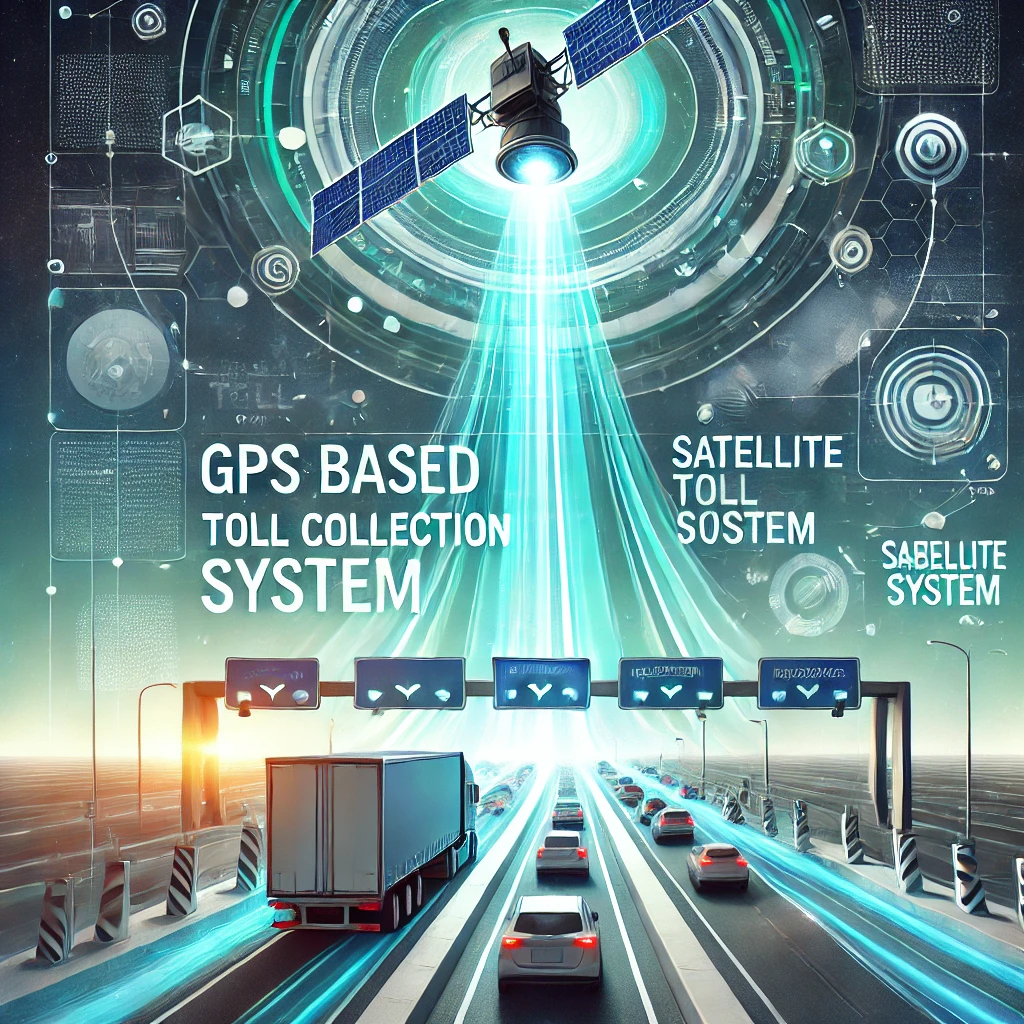GPS-based toll collection, also known as Global Navigation Satellite System (GNSS)-based tolling, is an advanced method that charges vehicles based on the exact distance traveled on toll roads. Unlike traditional toll collection systems that rely on physical toll booths or RFID-based systems like FASTag, GPS-based tolling offers a more seamless and efficient approach to toll collection.
Union Minister for Road Transport and Highways, Nitin Gadkari, has announced the Indian government’s plan to implement a GPS-based toll collection system aimed at replacing traditional toll plazas. This initiative is expected to enhance efficiency, reduce congestion, and ensure fair tolling by charging motorists based on the exact distance traveled on highways.
Key Announcements:
• Implementation Timeline: The government plans to introduce the GPS-based toll collection system by March 2024. The transition will begin with trucks and buses, with a phased rollout to include other vehicles, aiming for full implementation by 2026-27.
• Revenue Enhancement: Gadkari anticipates that the adoption of satellite-based tolling will plug theft and leakages, potentially increasing toll revenue by ₹10,000 crore.
• Elimination of Toll Plazas: The new system is expected to eliminate the need for physical toll booths, thereby reducing traffic congestion and improving the overall driving experience.
Statements from Nitin Gadkari:
• “Toll charges will be deducted directly from bank accounts, reflecting the distance covered on the road.”
• “The government is looking at new technologies, including GPS-based toll systems, to replace toll plazas in the country.”
Implementation Details:
• On-Board Units (OBUs): Vehicles will be equipped with OBUs that utilize GPS technology to track the distance traveled on toll roads. This data will be used to calculate toll charges, which will be deducted directly from the user’s linked bank account.
• Phased Rollout: The system will initially be implemented for commercial vehicles such as trucks and buses, with plans to extend it to private vehicles in subsequent phases.
Advantages:
• Reduced Congestion: Eliminating toll plazas is expected to decrease traffic bottlenecks, leading to smoother vehicular movement.
• Fair Tolling: Motorists will be charged based on the exact distance traveled, ensuring equitable toll collection.
• Increased Revenue: The system aims to reduce revenue leakage, potentially increasing toll income by ₹10,000 crore.
Challenges:
• Infrastructure Development: Establishing the necessary technological infrastructure and ensuring vehicle compliance may pose initial challenges.
• Public Acceptance: Educating motorists about the new system and addressing privacy concerns related to GPS tracking will be crucial for successful implementation.
The government’s initiative to adopt GPS-based toll collection reflects a commitment to leveraging technology for improved infrastructure and user experience on national highways. The phased implementation approach aims to ensure a smooth transition from traditional tolling methods to a more efficient, distance-based system.
Implementation Steps and Technical Requirements:
1. On-Board Unit (OBU) Installation: Vehicles must be equipped with an OBU that integrates GPS/GNSS technology to accurately track their location and distance traveled on toll roads. This device records the vehicle’s movements and calculates the toll charges accordingly.
2. Data Transmission: The OBU transmits travel data to a central system using mobile networks. This requires a reliable communication infrastructure to ensure real-time data transfer.
3. Centralized Toll Calculation System: A backend system processes the received data to compute toll charges based on predefined rates and the distance traveled. This system must be robust and capable of handling large volumes of data.
4. Payment Integration: The system should be integrated with various payment gateways to facilitate automatic deduction of toll charges from the user’s linked account.
Payment Methods:
• Direct Debit: Toll charges can be directly debited from the user’s bank account or credit card linked to the OBU.
• Digital Wallets: Integration with digital wallets allows users to maintain a balance specifically for toll payments.
• Prepaid Accounts: Users can top-up a prepaid account associated with their vehicle, from which toll charges are deducted.
Global Implementations:
Several countries have implemented GPS-based toll collection systems, primarily for heavy vehicles:
• Germany: The Toll Collect system charges trucks based on distance traveled on federal highways.
• Slovakia: Operates a GNSS-based tolling system for vehicles over 3.5 tonnes.
• Switzerland: Uses a distance-based heavy vehicle fee (HVF) system for trucks over 3.5 tonnes.
• Hungary, Belgium, Poland, and Czechia: These countries have implemented GNSS-based tolling systems for heavy vehicles.
Comparison with FASTag:
• Technology: FASTag uses RFID technology to deduct toll charges when a vehicle passes through a toll plaza, requiring physical infrastructure at each toll point. In contrast, GPS-based tolling relies on satellite tracking, eliminating the need for toll plazas.
• Toll Calculation: FASTag charges are fixed per toll plaza, regardless of the distance traveled on the toll road. GPS-based systems calculate charges based on the exact distance traveled, promoting fairer pricing.
Advantages of GPS-Based Toll Collection:
• Elimination of Toll Plazas: Reduces traffic congestion and travel time by removing the need for vehicles to stop or slow down at toll booths.
• Fair Pricing: Charges users based on actual road usage, ensuring equitable tolling.
• Reduced Infrastructure Costs: Decreases the need for physical toll collection infrastructure and maintenance.
• Enhanced Compliance and Monitoring: Facilitates better tracking of vehicle movements, aiding in traffic management and law enforcement.
Disadvantages:
• Privacy Concerns: Continuous tracking of vehicle location may raise privacy issues among users.
• High Initial Setup Costs: Equipping vehicles with OBUs and establishing the necessary backend infrastructure can be expensive.
• Technical Challenges: Ensuring accurate tracking in areas with poor GPS signals and preventing system tampering are significant challenges.
Potential Challenges in Adoption:
• User Resistance: Concerns over privacy and data security may lead to reluctance among users to adopt the new system.
• Cost of Implementation: The expense of installing OBUs in all vehicles and setting up the required infrastructure may hinder widespread adoption.
• Regulatory Hurdles: Establishing legal frameworks to govern GPS-based tolling and address issues like data privacy and enforcement can be complex.
In conclusion, while GPS-based toll collection offers numerous benefits over traditional systems like FASTag, including fairer pricing and reduced congestion, its implementation requires careful consideration of technical, financial, and regulatory factors to ensure successful adoption.




